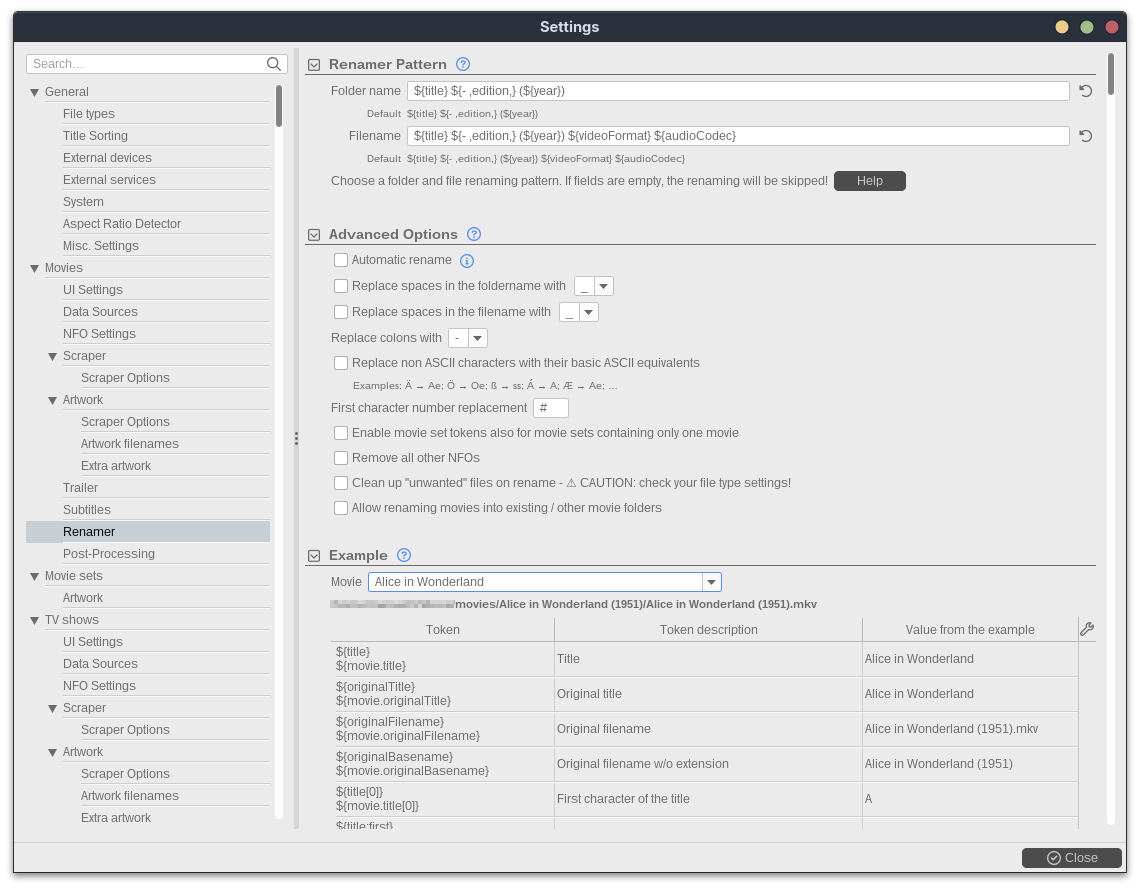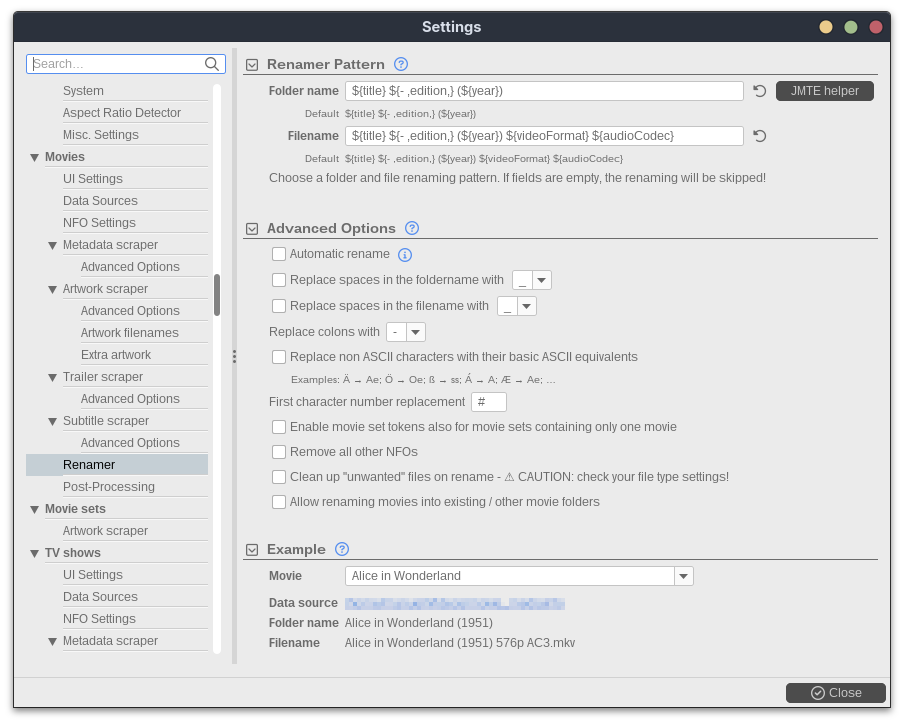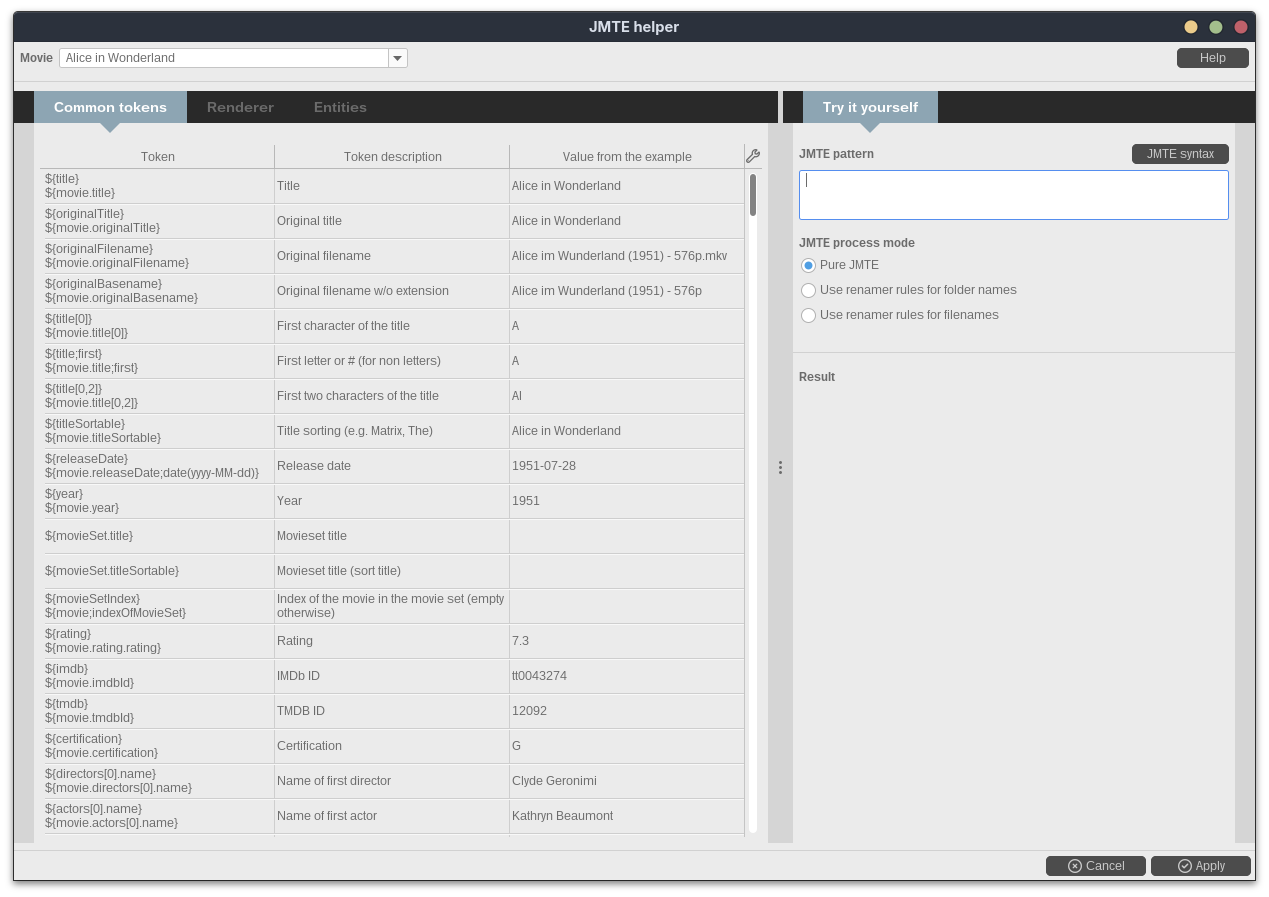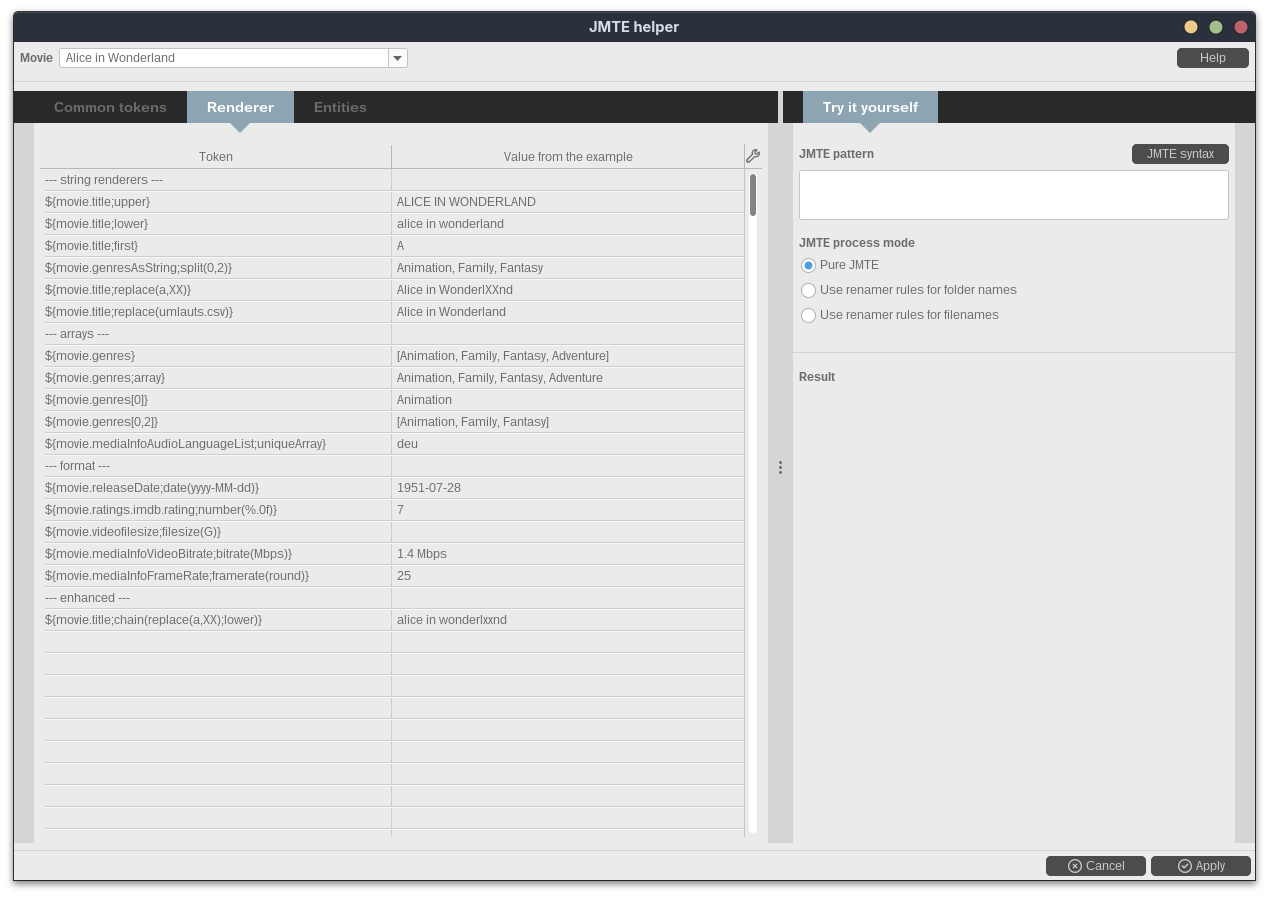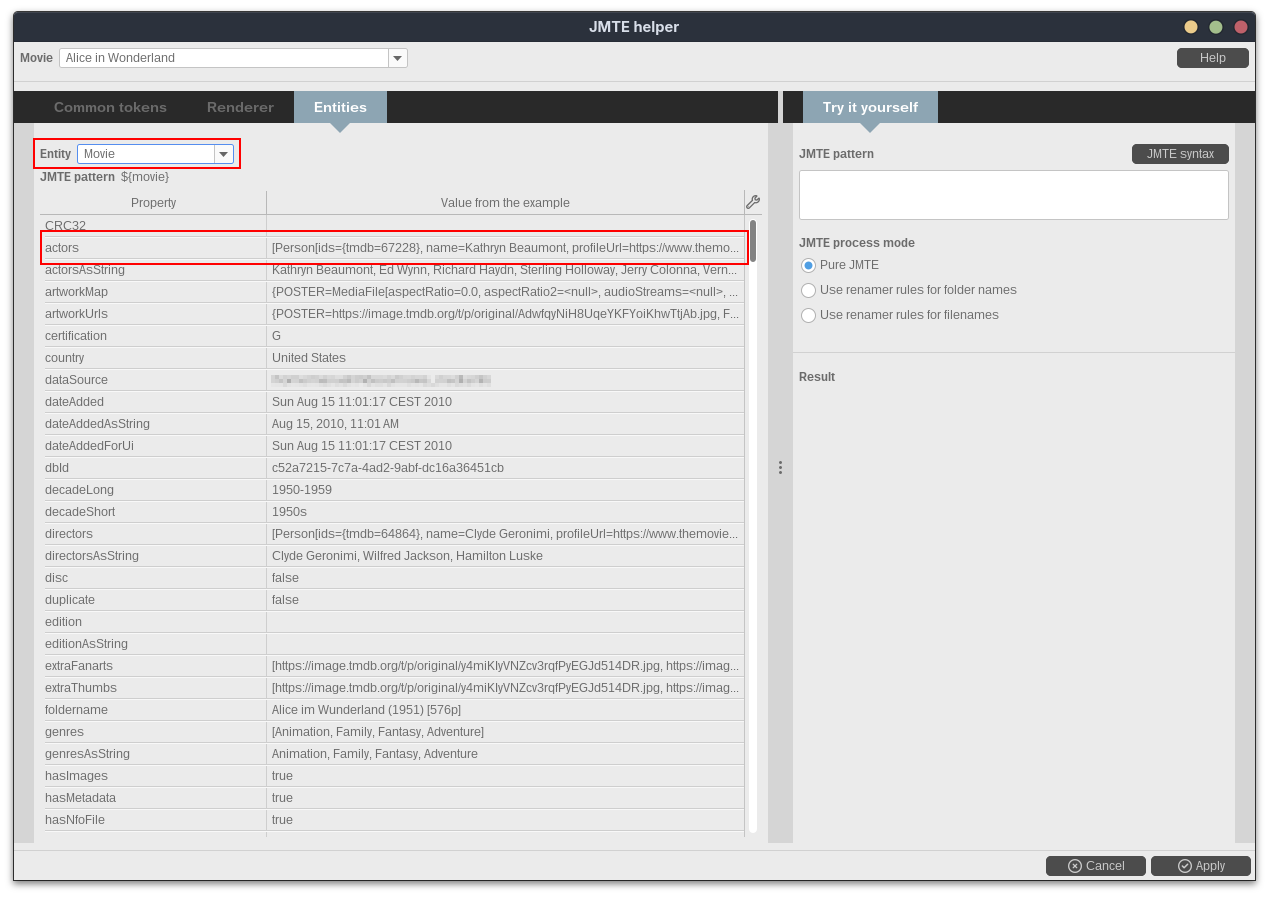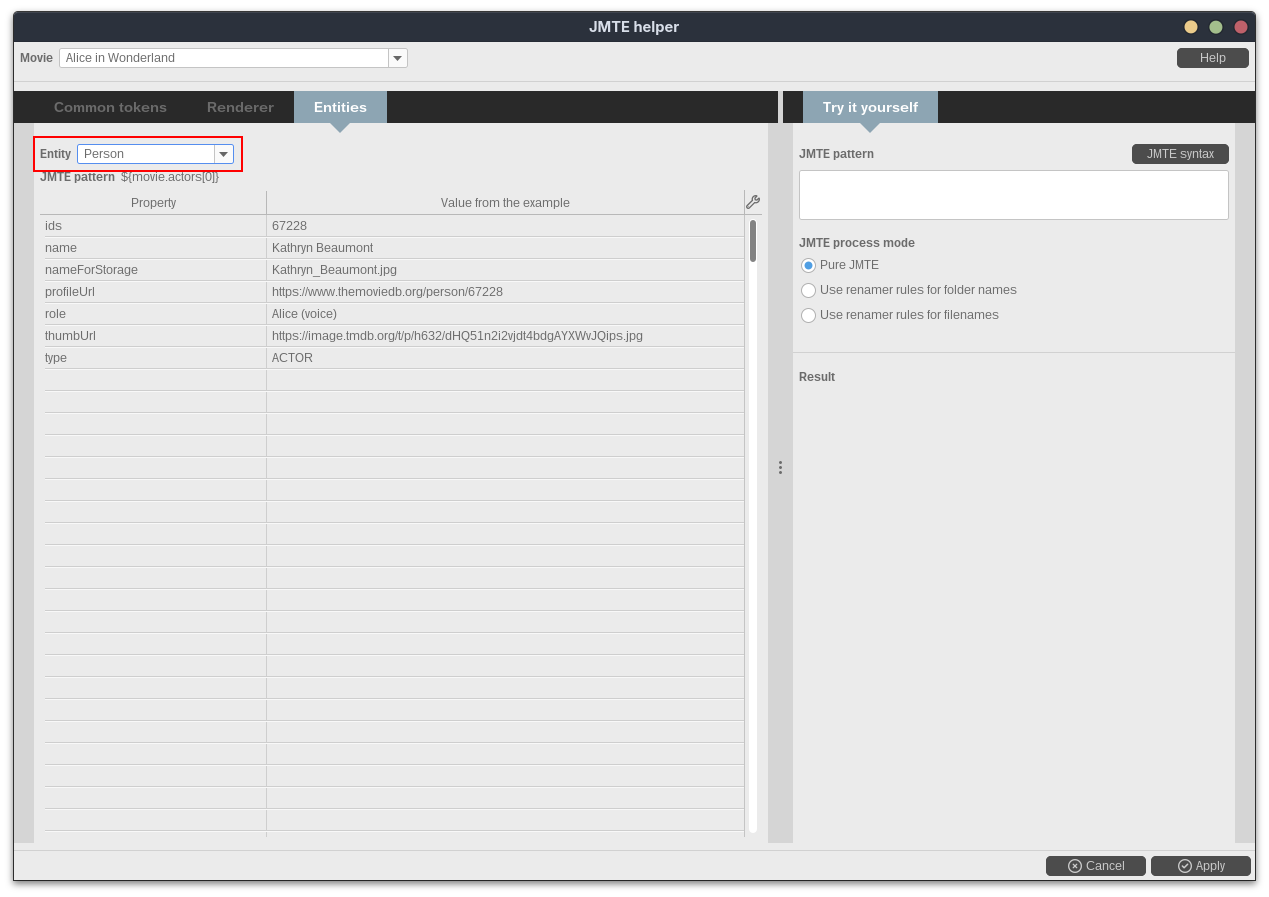Reworked renamer settings and JMTE helper
We’ve reworked the renamer settings panel and introduced a JMTE helper to enhance the UI experience in this area. While the old renamer panel was somehow overloaded:
we decided to extract the JMTE example part from this panel to make it less overloaded:
But where did the JMTE examples go? We extracted them from the renamer settings panel into an own dialog to offer them for export template designers too. This new dialog offer several different parts. On the left hand side there are the areas
Common tokens
Common tokens for the chosen module (movies/TV shows). This is exactly what we removed from the renamer panel:
Renderer
This tab contains some renderer examples. We know that you can use the renderers is a flexible way and we cannot put all possible usages as examples here, but we have chosen some common examples to show:
Entities
This is probably the most powerful tab of all. Just remember that our data model is rather complex where one object (e.g. movie) contains some other objects. In many cases you need to know which properties are offered by embedded objects (like actors or media files). We have extracted a list of most available properties in our docs, but this dialog let you explore the data model by yourself:
In this example we have chosen the topmost entity Movie. Let’s take the actors for example ([Person[ids={tmdb=67288}, name=...: you see that this is an array because it starts with a bracket [ before any other identifier followed by Person which indicates that this array contains 1+ Person objects. After this, you see the some properties of the actor (Person) itself. But how to dig deeper? Let’s choose the entity Person:
Now you will see all properties of the object Person (in the example there is always the first object of the array). The entity explorer is a great addition to help you creating your own JMTE templates with ease!
On the right hand side of the dialog you will be able to try JMTE patterns yourself. Because the JMTE engine uses different rules, you need to choose which rules should be used for your sandbox:
- Pure JMTE - Using this option, pure JMTE will be used. This is used in the exporter engine.
- Use renamer rules for folder names - With this option the JMTE engine uses the rules for creating folder names (used in the renamer for the folder pattern)
- Use renamer rules for filenames - With this option the JMTE engine uses the rules for creating filenames (used in the renamer for the filen pattern)

